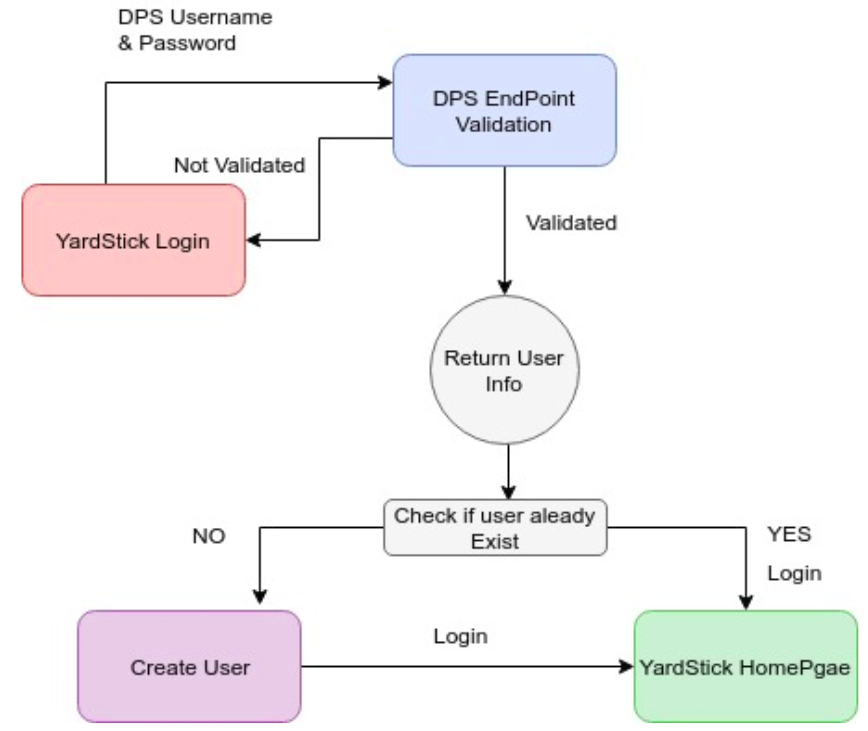"Information is a source of learning. But unless it is organized, processed, and available to the right people in a format for decision making, it is a burden, not a benefit." - C. William Pollard, Chairman, Fairwyn Investment Company
Have you always secretly wanted to spend your evenings writing symphonies, learning about filmography or assessing climate change? Studying niche subjects have traditionally been for niche students. But e-learning platforms have changed all that with the provision for learning almost any subject online.

Corporate e-learning has witnessed a stupendous 900% growth in the last decade or so. With more and more e-learning platforms flourishing, organisations are striving to be the best to stand apart from the rest. Drupal has been a great asset in powering education and e-learning with its powerful capabilities that can help enterprises offer a wonderful digital experience. Let’s trace the roots of e-learning before diving deep into the ocean of possibilities with Drupal for building an amazing e-learning platform.
Before the internet era

A brief history of e-learning can be traced through the compilation made by eFront. Even before the internet existed, distance education was being offered. In 1840, Isaac Pitman taught shorthand via correspondence where completed assignments were sent to him via mail and he would, then, send his students more work.
Fast forward to the 20th century, the first testing machine was invented in 1924 that enabled students to test themselves. The teaching machine was invented in 1954 by a Harvard professor for allowing schools to administer programmed instruction to students. In 1960, the first computer-based training program (CBT program) called Programmed Logic for Automated Teaching Operation (PLATO).
At a CBT systems seminar in 1999, the term ‘e-learning’ was first utilised. Eventually, with internet and computers becoming the core of businesses, the 2000s saw the adoption of e-learning by organisations to train employees. Today, a plenitude of e-learning solutions are available in the form of MOOCs (Massive Open Online Courses), Social platforms and Learning Management System among others.
E-learning: Learn anywhere, anytime
In essence, e-learning refers to the computer-based educational tool or system that allows you to learn anywhere and at any time. It is the online method of building skills and knowledge across the complete workforce and with customers and partners. It comes with numerous formats like the self-paced courses, virtual live classrooms or informal learning.
E-learning refers to the computer-based educational tool or system that allows you to learn anywhere and at any time
Technological advancements have diminished the geographical gap with the use of tools that can make you feel as if you are inside the classroom. E-learning provides the ability to share material in all sorts of formats such as videos, slideshows, and PDFs. It is possible to conduct webinars (live online classes) and communicate with professors via chat and message forums.
There is a superabundance of different e-learning systems (otherwise known as Learning Management Systems or LMS) and methods which enable the courses to be delivered. With the right kind of tools, several processes can be automated like the marking of tests or the creation of engrossing content. E-learning offers the learners with the ability to fit learning around their lifestyles thereby enabling even the busiest of persons to further a career and gain new qualifications.
Merits and Demerits
Some of the major benefits are outlined below:
- No restrictions: E-learning facilitates learning without having to organise when and where everyone, who is interested in learning a course, can be present.
- Interactive and fun: Designing a course to make it interactive and fun with the use of multimedia or gamification enhances engagement and the relative lifetime of the course.
- Affordable: E-learning is cost-effective. For instance, while textbooks can become obsolete, the need to perpetually acquire new editions by paying exorbitant amounts of money is not present in e-learning.
Some of the concerns that are needed to be taken care of:
- Practical skills: It is considered tougher to pick up skills like building a wooden table, pottery, and car engineering from online resources as these require hands-on experience.
- Secludedness: Although e-learning enables a person to remotely access a classroom in his or her own time, learners may feel a sense of isolation. Tools such as video conferencing, social media and discussion forums can allow them to actively engage with professors or other students.
- Health concerns: With the mandatory need of a computer or mobile devices, health-related issues like eyestrain, bad posture, and other physical problems may be troublesome. However, sending out proper guidelines beforehand to the learner like correct sitting posture, desk height, and recommendations for regular breaks can be done.
Building Yardstick LMS with Drupal
OpenSense Labs built Yardstick LMS, a learning management system, for Yardstick Educational Initiatives which caters to the students of various schools of Dubai.

The architecture of the project involved a lot of custom development:
1. Yardstick Core
This is the core module of the Yardstick LMS where the process of creating, updating and deleting the nodes take place.
2. Yardstick Quiz
We built this custom module for the whole functionality of the quiz component. It generates a quiz, quiz palette and quiz report after quiz completion based upon the validation of the visibility of the report.

We could generate three kinds of reports:
- An individual-level quiz where one’s performance is evaluated
- A sectional-level report where performance for each section is evaluated
- Grade-level report where performance for all the sections is compared and evaluated.
For the quiz, we had different sub-components like questions, options, marks, the average time to answer, learning objective, skill level score, and concept. The same question could be used for different quiz thereby minimising the redundancy of the data. Also, image, video or text could be added for questions.

3. Yardstick Bulk User Import
This module was built to assist the administrators in creating users all at once by importing a CSV file. Also, there is an option to send invitation mail to all the users with login credentials.

4. Yardstick Custom Login
We provided a custom login feature where same login credentials could be used to log into the Yardstick system. That is, we provided an endpoint for verifying the login credentials and upon success, users were logged in.
5. Yardstick Validation
This module offers all the validation across the site whether it is related to access permission or some time validation.
6. Yardstick Challenge
It offers the user an option to submit a task which is assigned to them where they are provided with text area and file upload widget.
Yardstick LMS has an intricate structure
On the end user side, there is a seamless flow but as we go deeper, it becomes challenging. Yardstick LMS has an intricate structure.
We had two kinds of login:
- Normal login using Yardstick credentials
- And the other for school-specific login like the Delhi Public School (DPS) users.

For DPS users, we used the same login form but a different functionality for validating credentials. DPS school gave us an endpoint where we sent a POST request with username and password. If the username and password were correct, then that endpoint returned the user information.
If the username was received, we checked on our Yardstick system if the username exists. If it does not exist, then we programmatically created a new user with the information that we received from the endpoint and created a user session. And if does exist, then we updated the password on our system.
Yardstick LMS is designed to govern multiple schools at the same time
We designed Yardstick LMS in such a way that multiple schools can be governed at the same time. All the students of various schools will be learning the same content thereby building uniformity.
The core part of our system dwells in the modules. The module is a content type that can store numerous information like components, concept, description, objective, syllabus among others.
Several different components can be added like Task, Quiz, Video task, Extension, Feedback, Inspiration, pdf lesson plan, Real life application, and Scientific principles.

Schools could opt for different modules for different grades. When a module was subscribed by a school, a clone module of the master module was created and the school copy was visible only to the school. School version could be modified by the school admin as per their needs and preferences. Master module remained the same. While creating a subscription, administrator had to provide the date so that the components were accessible to the students. School admin could set different dates to different components and only the components with past date were accessible.

Also, we provided an option to create a dynamic feedback form for the modules for analysis. Yardstick Admin had the option to design and create a feedback form as per their requirement and could assign it to a particular module. Different types of elements could be utilised for designing the form like rating, captcha, email, range slider, text field, checkboxes, radio buttons and so on.

Students and teachers need to submit their feedback for each of the modules. On the basis of this, Yardstick team try to improve the content of the system.

Also, various roles were defined for users such as Yardstick Administrator, School Administrator, Teacher, and Student.
1. Yardstick Admin
Yardstick Admin can perform all the operations. He or she can create new users, grant permissions and revoke them as well.
2. School Admin
It has the provision for handling all the operation which are only related to their school. School Admin handles the modules and their components and can import user for their school. All school reports and task submissions are visible to School Admins.
3. Teachers
Teachers can view modules and components assigned to their classes and provide remarks to the students for multiple components and they can view all kinds of reports.
4. Students
They can attempt quiz, submit tasks, view components and view their own reports.
What’s the future of e-learning?
According to a report on Research and Markets, the e-learning market is anticipated to generate revenue of $65.41 billion by 2023 with a growth rate of 7.07% during the forecast period.
The report goes on to state that with the advent of cloud infrastructure, peer-to-peer problem solving and open content creation, more business opportunities would pop up for service providers in the global e-learning market. The introduction of cloud-based learning and AR/VR mobile-based learning will be a major factor in driving the growth of e-learning.
The growth of the e-learning market is due to the learning process enhancements in the academic sector
According to Technavio, the growth of the market is due to the learning process enhancements in the academic sector.

Following are major trends to look forward to:
- Microlearning, which emphasises on the design of microlearning activities through micro-steps in digital media environments, will be on the rise.
- Gamification, which is the use of game thinking and game mechanics in a non-game context to keep the users engrossed and help them solve more problems, will see increased adoption rates.
- Personalised learning, which is the tailoring of pedagogy, curriculum and learning environments to meet the demands of learners, can be a driving force.
- Automatic learning, like the one shown in the movie The Matrix where a person is strapped onto a high-tech chair and a series of martial arts training programs are downloaded into his brain, can be a possibility.
Conclusion
It’s a world which is replete with possibilities. As one of the most intelligent species to walk on this earth, we perpetually innovate with the way we want to lead a better lifestyle. We learn new things to gain more knowledge. And in the process, we find ways of improving our learning experience. E-learning is one such tech marvel that promises to be a force to reckon with. It is not a disrupting technology but something that is going to get bigger and bigger in the years to come.
As a content management framework, Drupal offers a magnificent platform to build a robust e-learning system. With years of experience in Drupal Development, OpenSense Labs can help in providing an amazing digital experience.
Contact us at hello@opensenselabs.com to build an e-learning system using Drupal and transform the educational experience.


